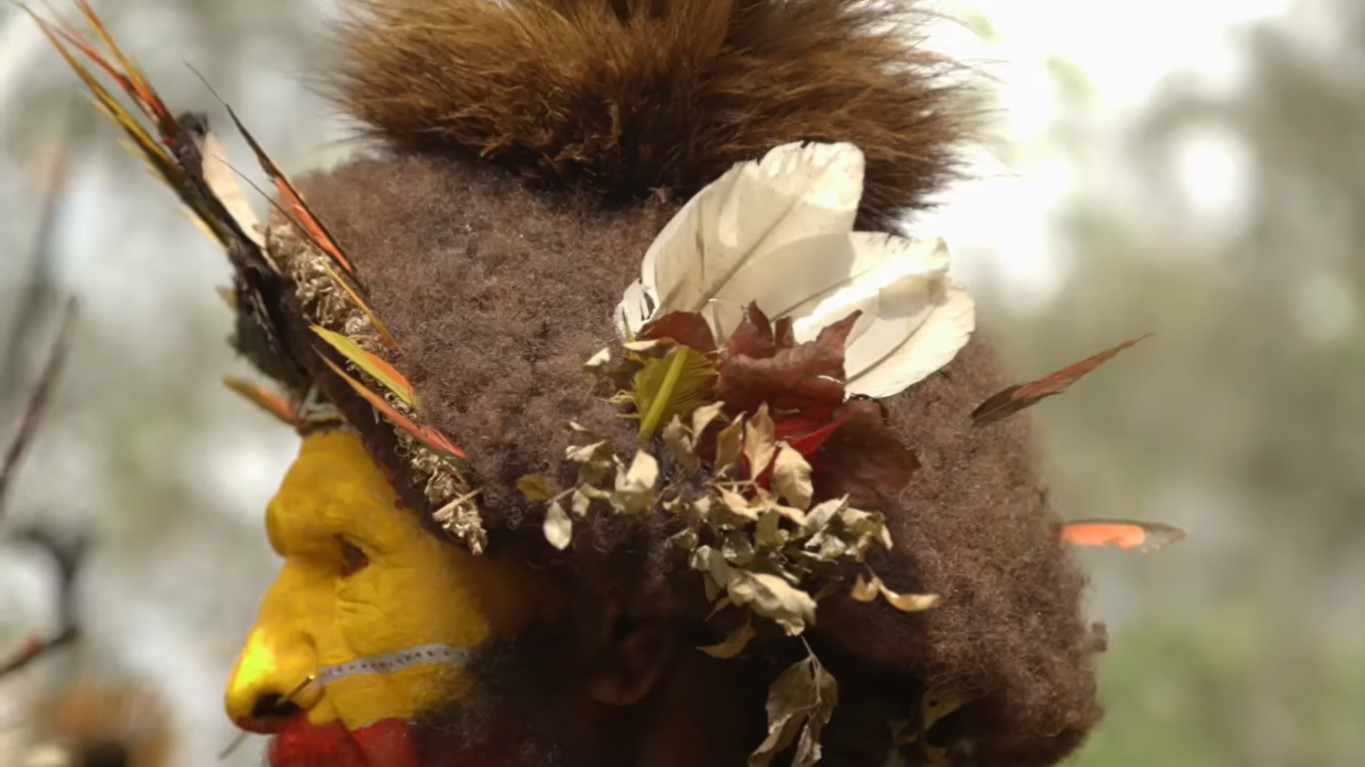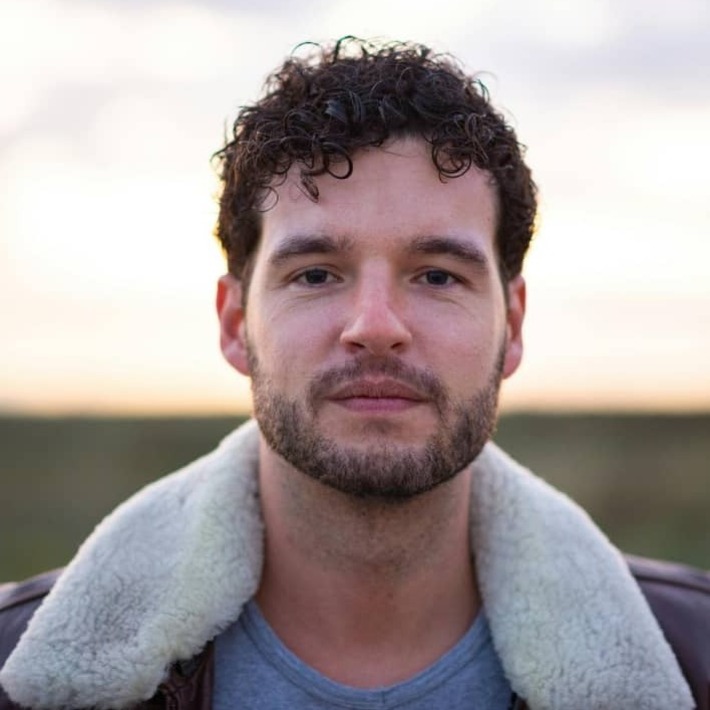Two Stories From Papua New Guinea - Huli Wig And A Crocodile’s Cult
There are two stories from Papua New Guinea that showcase its incredible cultural diversity. They reveal the vibrant cultural heritage of its various tribes.
Author:Liam JonesReviewer:Maya ReyesDec 11, 20238.9K Shares469.7K Views

For those unfamiliar with this place, Papua New Guinea (PNG) is a diverse and culturally rich country located in the southwestern Pacific.
The nation comprises the eastern half of the island of New Guinea and numerous smaller islands.
While not as widely known as some other tourist destinations, Papua New Guinea offers unique and authentic experiences for adventurous travelers.
Below are a couple of stories that share a glimpse of Papua New Guinea.
Gone Today, Hair Tomorrow - A Huli Wig Story
Adibe Pakaya, at the age of 19, had to go back to school. Hair school.
First, he said a formal goodbye to the mother and sister that he wouldn’t see for more than four years.
Tears streaked his mother’s red-and-yellow clan face paint as she gave him a new bark string bilumbag in which to carry his spare kilt, his small collection of parrot feathers and possum fur, and his two precious shell leg bracelets.
Adibe then walked over to the hut his father shared with the other clan males, an arrow shot away.
Like most Papua New Guinea highlander couples, Adibe’s parents avoid contact wherever possible, leading separate lives - sleeping, cooking, eating and working apart - except for the occasional reproductively necessary act of sex in their garden.
Women are the cause of sickness and debility, the Highlanders believe. The deadliest poison for the Huli man is menstrual blood.
In spite of the risks involved in being close to a woman, Adibe wanted to get married.
He needed help in his garden, and anyway, he was ready for a new experience.
His parents didn’t mind, since the intended bride was fat and hardworking, and they could afford to pay the bride price of 200 Kina ($200) and 25 pigs by trading part of their shell collection.
But the Pakayas, traditionalists to the core, demanded a traditional wedding ceremony - and that required hair, lots of hair. Two personally grown wigs that needed four and a half years of strenuous hair treatment, to be exact.
Bizarre, inconvenient, and expensive, huge, feather and flower-decked wigs are still worn by about half the 50,000 Huliwarriors in the Southern Highlands of Papua New Guinea - often with faces painted in yellow, red, blue, white, and black.
The Daily Wig is brown and mushroom shaped, while the Ceremonial Wig is red or black, with raised sides, and uses compacted hair; thus, needing twice as much hair as the Daily wig.
Both wigs are supported by bamboo frames and decorated with - according to the owner’s taste and wallet - a variety of things, such as feathers from:
- birds of paradise
- eagles
- parrots
- cassowaries
Other decorations may include flowers and other things like:
- daisies
- hibiscus
- possum
- cat fur
- colorful candy papers
The wigs are made from the wearer’s own hair preferably.
However, using a relative’s hair or buying a complete wig on the open market is possible though spiritually unsound, not to mention expensive.
A Daily wig, unadorned, costs $200 - about four times the average monthly wage for the few Hulisin employment.
Since most Hulisare subsistence farmers, spare cash for wigs is hard to come by; yet, without the magic and instruction of a professional Hair Trainer, men cannot grow sufficient hair, of sufficient quality, in the right shape, to satisfy traditional wig requirements.
Pakaya Senior, eyes circled with red and black paints from the trade store, wig drooping with age, and slightly disheveled but sporting a couple of stunning flattened parrots set off perfectly by tightly packed yellow daisies, offered Adibe his first official taste of betel nut.
Adibe was grateful for this recognition of his maturity, and feigning inexperience of the Green Bullet, chewed and spat with studied amateurism.
His father then presented him with a polished cassowary thigh bone dagger that served both as a weapon and as a tool to poke the powdered lime catalyst into Adibe’s betel stuffed cheek.
His generosity did not end there.
He dug into his bilumbag and pulled out more cassowary remnants - black wing bones that, worn as a necklace, endow the wearer with all the power, aggression, and ferocity of the bird from which it came.
Adibe was moved.
He could hardly contain himself as he shook hands with his father, took the leash of his tuition fee - a large black pig - and set off barefoot down the stony road to school and manhood.
Adibe had a long way to go, but with betel juice pumping up his system and the excitement of his new possessions, not to mention a lucky two Papua New Guinean Kina-ride on a passing truck, he soon got to the outer ditches demarking the school grounds.
Hulisdo not live in villages, but in small, scattered clans, each with its own plot of land on which to grow the staples, such as sweet potatoes, taro, and greens.
These “gardens” are surrounded by high mud walls and deep trenches that not only delineate clan territory and keep marauding pigs out, but also function as concealed warpaths, giving the area a kind of sunny, green, World-War-1 trench ambience.
Spiked fences with small access ports function as gates and ensure that any visitor is physically disadvantaged when coming or going - especially in haste; for example, with an enraged axman in pursuit.
A ten-minute walk along the school’s labyrinthine trench system, ducking through a number of gates, brought Adibe to the muddy inner compound, the living area of the College of Certain Hair Growth.
He saluted the other three students, and handed his tuition fee’s leash over to the school principal, Pirigo Piribu, who greeted Adibe formally and read him the School Rules:
1. Do not sit near the fire in the sleeping hut.
2. Do not look at, speak to, or touch any woman.
3. Water your hair 12 times a day directly from the stream.
4. Hunt possums and Birds of Paradise for wig decoration.
5. Drink magic water from bamboo pipes prepared by the Principal.
6. Memorize Hulilore, as taught by the Principal.
7. Practice painting your face.
8. Wear the bamboo hair frame at all times.
9. Work every day cultivating the school garden.
10. Make sure the pigs don’t get sun stroke.
The rules were tough, but this was the PNG way, and Adibe knew that he would eventually leave this Institute of Higher Hair Development with a wider knowledge of a man’s role in life and two spectacular wigs of color-bedecked hair as graduation certificates.
He would soon dance, like a Bird-of-Paradise mating ritual, in nearby villages and be a big man and a Huli warrior.
The Cult Of The Crocodile
The Sepik River is the Orient’s answer to the Amazon.
A long, lazy stretch of muddy water patrolled by mosquitoes the size of golf balls, the Sepik drifts by scattered villages on stilts that hold more of Papua New Guinea’s unique contributions to el mundo loco - the crazy world.
Curly roofed Haus Tambaranshouse the local spirits, as well as superbly grotesque shell masks, penis gourds, and other vital bric-a-brac on offer to passing travelers.
Crocodile symbolism is a recurring theme here, though the overhunted reptiles are rarely seen these days.
House stilts, canoe prows, and masks bear toothy carvings that remind locals of the days not long gone when young men hunted crocs by wading and stamping through chest-deep water.
When they trod on a dozing croc it was a race to see who grabbed who first. Macho times.
These days some men carry croc scars, but they get them from a tribal elder during a rite of manhood, not from an outraged reptile.
After spending several months closeted in the exclusively male Haus Tambaran, being educated in the ways of the tribe, the young man’s back and chest are deeply cut with razor blades in a pattern that imitates crocodile scales.
Tree oil is rubbed in to disinfect the gashes, followed by mud to ensure the cuts heal as raised keloid scars.
Thus, in one painful day the youth “excises” his mother’s blood and acquires the power and cunning of the crocodile.
Physically, the end result is both grotesque and appealing.
Could this be a future fad in European body design?
These two stories from Papua New Guinea provide a hint of the unique and authentic experience it offers to foreign tourists.

Liam Jones
Author
Liam Jones has made it his mission to prove that adventure doesn’t need a hefty budget. Having traveled to over 40 countries, he specializes in finding affordable ways to experience the world, from the best street food in Bangkok to hidden gems in Lisbon.
Liam’s travel tips have reached thousands of readers, empowering them to see the world on a shoestring budget without sacrificing quality. With a deep passion for local cultures, he continues to share his travel hacks, ensuring adventure remains accessible to all.

Maya Reyes
Reviewer
Maya Reyes’s wanderlust was sparked in the temples of Luang Prabang, where the scent of lemongrass and the chants of monks revealed the transformative power of travel.
Since then, her journey has been defined by cultural immersion and authentic connections. From learning batik in Indonesia to sharing meals with nomadic families in Mongolia, Maya seeks experiences that highlight the human stories behind each destination.
Travel for her is a way to weave her narrative into the world’s cultural tapestry, creating bridges across diverse ways of life. Maya has traveled to 15 countries and shares her insights through writing and storytelling.
Latest Articles
Popular Articles